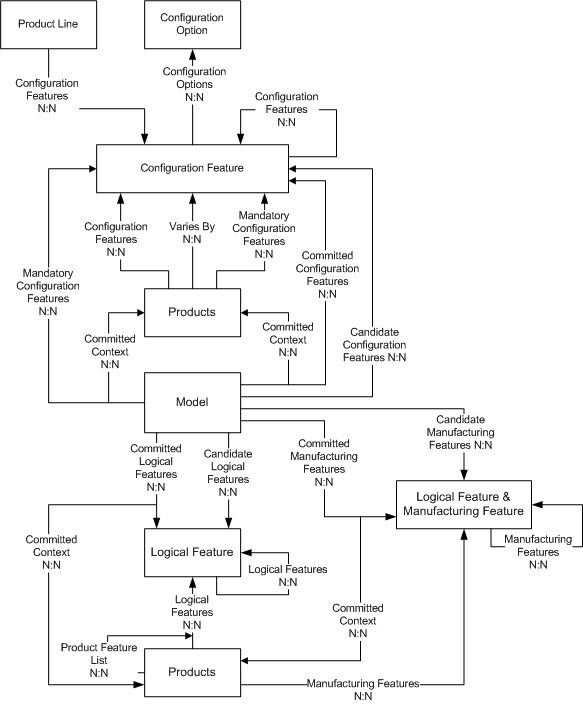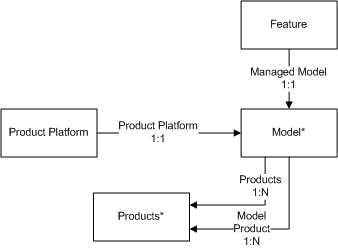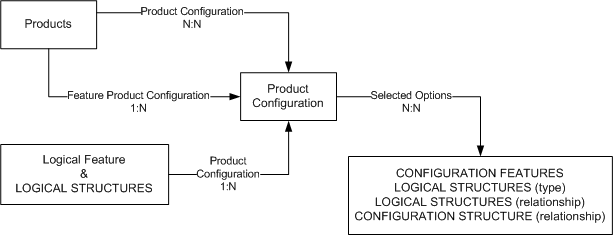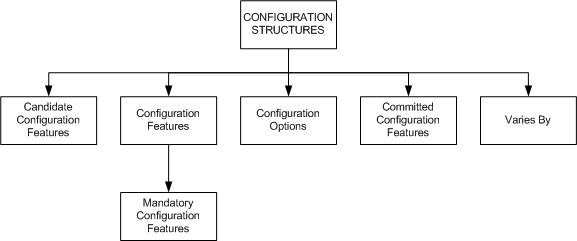Data Models for ENOVIA Variant Configuration Central | ||
| ||
![]()
Rules
This graphic shows the Rule type hierarchy.
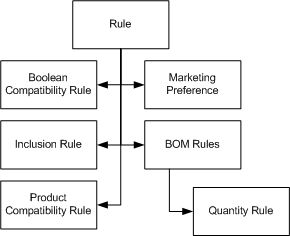
This graphic shows rules and how they are used in configuration and logical structures:
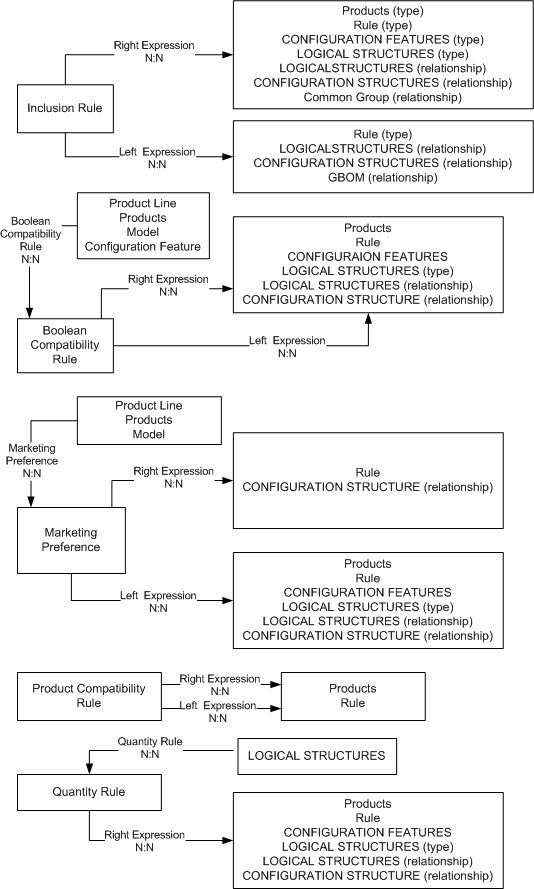
This graphic shows how the attributes for relationships are used in rules.

The right and left expressions are built using the Right Expression and Left Expression relationships. These relationships may connect to the rule itself, or to products or features lists. The rule contains an attribute, Comparison Operator, that instructs it how to evaluate the right and left expressions. These operators are supported:
- Incompatible
- Requires
- Co-Dependent
- Compatible
The right and left expressions are built using multiple relationships connected to the rule or to products or feature lists, and each relationship contains a sequence order and token attribute. When a relationship is connected to a product or feature list, the sequence order is provided, but no token is used. When connected to the rule itself, both the sequence order and token attributes are used. Tokens may be any of these:
- AND
- NOT
- OR
- (
- )
For example, if Product ABC or Product DEF is configured with Configuration Feature GHI, then the product must also be configured with Configuration Feature JKL. This graphic shows the objects and relationships required to define this rule.
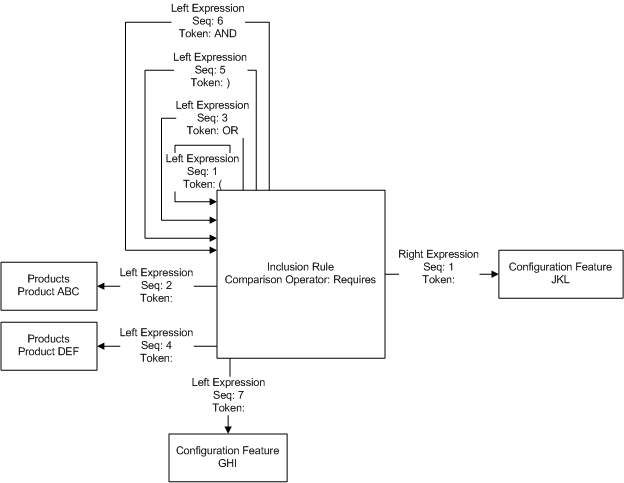
When the left expression relationships are build in sequence using the specified tokens, the inlcusion rule becomes:
( Product ABC OR Product DEF) AND Configuration Feature GHI requires Configuration Feature JKL.
The right expression could also have contained multiple relationships.

